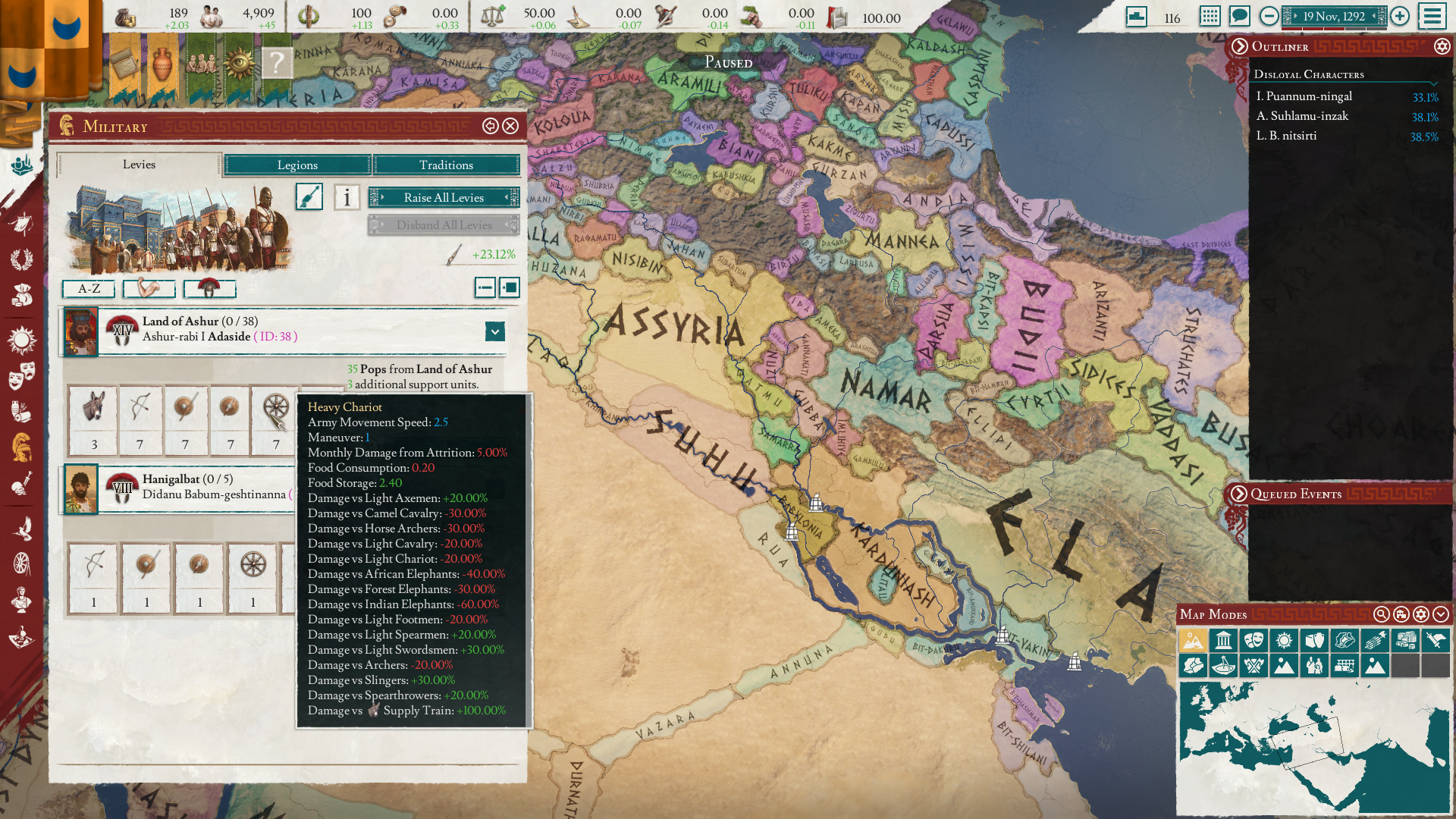Dev Diary 11: After a break
After a fairly long delay, it's nice to see you back. As I said yesterday, the tradition system works and only cosmetic work remains until it is released. In this DD, I will talk a little about the idea of the whole system and the differences between the factions. There is a lot of it and the time is short, so I will be brief.
In fact, in short, the fighting style in each culture depended on the conditions in which the local people lived. Inhabitants of open areas preferred more mobile and ranged forms of combat, and where the terrain became tight and limited the room for maneuver, infantry formations were placed. Peoples with a long coastline had naturally developed sailing abilities. The first mentions of Illyrian pirates date back to the 10th century BC, and Illyria quite strongly resembles Greece, so it is no wonder that both of them had colonization impulses.



As I promised, the great majority of cultural groups have their own traditions, although some of them share them with two to three others. I will look at it from time to time so I did not know if it is worth showing you everything one by one, and a lot can change anyway. I would like to add that each tree has from 12 to 16 traditions with short descriptions. For example, you will be able to find out what the Kassites were known for in antiquity or where the Blade called Sica came from to end up among the Judean partisans (hence their name Sicarians) fighting Rome.
And here is the table of units from which I got neurosis yesterday

Going from the beginning we have: Axmen with long and short axes, camels, heavy cavalry, horse archers and light cavalry, then heavy and light chariots, elephants in African, forest and Indian versions, infantry in the form of better armed soldiers, spearmen and swordsmen in the heavy and light versions, archers, skirmishers and slingers.
Since I did not mention it earlier, I will mention Battle Axes, because they are not such an ordinary weapon. Their range makes it possible to defend themselves against the attacks of the cavalry, however, it requires a lot of skill in the use and mainly that is why it was rare. The Egyptians probably had one such unit in Pharaoh's personal guard. However, among the Germanic tribes, its popularity was high and it can be seen in the reliefs from the era where the local elite is depicted with them. Another unit are chariots, which in the heavy version were used to break the opponent's formation, and the light ones were such a worse version of horse archers.
A lot of changes are ahead of us, so don't get too attached to the numbers. I hope there will be no more delays and I can finish the project smoothly. Take care while I get back to work.























